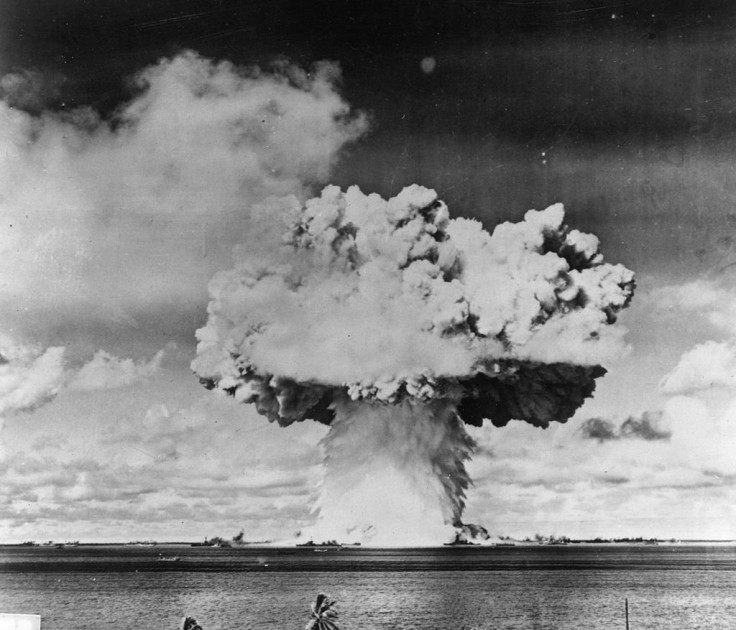Perhaps one of the most unforgettable event in history is when the atomic bomb "Fat Man" was dropped in Nagasaki on August 9, 1945. The incident did not only led to Japan's surrender but it also ultimately ended the World War II.
But did you know that the plane carrying the bomb was not originally targeting Nagasaki? And Nagasaki was not even included in the list of cities where the atomic bomb would be dropped?
In this article, let us explore then things that you probably didn't know about the atomic bombing of Nagasaki.

1. The Code Name for The Bomb Were Taken From the Movie 'The Maltese Falcon'
The design of the bomb that hit Nagasaki was created by Robert Serber who selected the codenames according to the design shapes of the bombs, as per Learnodo-Newtonic website. It was called "Fat Man" because it was round and fat. It was named after Sydney Greenstreet's "Kasper Gutman" character in "The Maltese Falcon."
2. The Bomb Dropped in Nagasaki was a Plutonium Implosion-Type Bomb
The bomb that was dropped on Nagasaki was a plutonium implosion-type atomic bomb. The bomb used the explosive power of dynamite to create pressure on a ball of Plutonium in the weapon's center. This reaction squeezed the atoms closer together to achieve a nuclear fission.
3. Fat Man is a Fission Bomb
Fat Man is an atomic bomb or fission bomb, which set off a chain reaction of nuclear fission. Different elements were created when the atomic nuclei of radioactive materials were split. This releases a large amount of energy further splitting more atoms, thus, producing a destructive explosion.
4. The Fat Man has a Core of Plutonium-239
The Fat Man made use of plutonium-239 core. It was ignited using thousands of pounds of conventional explosives, that set off a chain reaction of nuclear fission.
5. Nagasaki was Not on the Initial Target List
Five targets were listed including Kokura, Hiroshima, Yokohama, Niigata and Kyoto. But Henry L. Stimson, the then Secretary of War, admired Kyoto because previously he had spent his honeymoon there. Thus, he was adamant to remove Kyoto from the list. On July 25, Nagasaki replaced Kyoto on the target list.
Read Also: Google Files Lawsuits Against Sonos Over Patents Violation
6. Nagasaki was Not the Target for the Second Bombing
The second bombing was actually scheduled on August 11, in Kokura. However, due to forecast of bad weather, it was moved by two days ahead. Kokura was obscured due to clouds, and smoke because of a firebombing nearby. Therefore, with the plane running low in fuel, it was then decided to bomb the secondary target, Nagasaki.
7. Tsutomu Yamaguchi Survived Both Hiroshima and Nagasaki Bombings
Yamaguchi was 3 kilometers away when 'Little Boy' hit Hiroshima. While the explosion ruptured his eardrums and caused him severe burns, he went to Nagasaki the next day. He was again 3 kilometers away when 'Fat Man' hit Nagasaki. He was unhurt this time.
8. Before the atomic attacks, the US Air Force dropped pamphlets in Japan
The pamphlets didn't particularly warn of a possible nuclear attack on either Hiroshima or Nagasaki. Instead, the pamphlets only cautioned about "prompt and utter destruction" and asked civilians to flee according to History Hit.
9. The Airplane that Dropped Fat Man was Named "Bockscar"
The bomb that hit Nagasaki was dropped by a USAAF B-29 airplane named "Bockscar", after its commander, Frederick Bock. The plane took off from Tinian Island, piloted by U.S. Army Air Force Major Charles Sweeney.
10. Fat Man is 40 Percent More Powerful than Little Boy
Fat Man was dropped at Nagasaki on August 9,1945. It detonated at an altitude of 1,650 feet over the city with a yield of 21 kilotons. It is said to be about 40 percent more powerful than Little Boy, according to National WW2 Museum website.
Related Article: High-Tech Weapons of World War III









